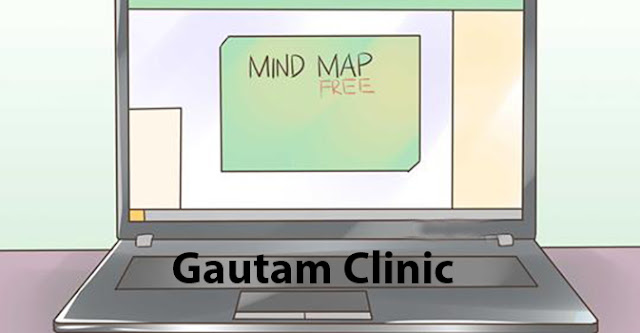How to Make a Mind Map
Planning
Your Mind Map
Imagine an airplane flying in the sky. When you visualize or see an airplane in the sky, the airplane is your central focus at that moment. But your brain isn’t done there. It also immediately begins to make references, or associations, to the airplane. These might include the color of the sky, different types of planes, how they fly, pilots, passengers, airports and so forth. Because we think in images, not words, these associations often appear in a visual form in our minds.
Visualize a spider or a tree full of branches
now. With a mind map, you take the concept of
the airplane and write AIRPLANES in the center (the spider’s body or the trunk
of the tree) of a blank piece of paper. Then, radiating out from the airplane,
are different colored lines (tree limbs or spider legs). On these you write the
associations you had to airplanes, such as PILOTS and AIRPORTS. From each of
these are more associations, which you note on individual lines.
·
In association with pilots you might think of their pay or
training. And so the map grows.
·
A mind map mirrors how our brains actually process and recall
information – dynamically and visually, not in a purely linear fashion as it
was once thought.
·
For instance, mind mapping has proven very effective for note
taking. Instead of writing down each word the teacher says as it’s said (linear
thinking), you write the name of the lecture topic in the center of your paper.
As subtopics, examples, dates and other information are discussed, you draw and
label corresponding branches.
·
It’s also used instead of standard outlines in academia to prepare
essays, to write research papers, to study for exams, etc.
Use your brain the way it thinks. Buzan called this radiant thinking. When our brains lock onto something – an idea, sound, image, emotion, etc. – that “something” stands at the center of our thinking. Radiating out from it are countless other things, ideas, other images, emotions, etc. that our brains associate with it.
·
A mind map helps you make connections between and among these
different pieces of information and concepts. And, the more connections or
associations our brains make to a thing, the more likely we are to remember it.
Create, capture, consume and communicate
information. Making these connections allows you to do each of these
quickly and effectively. Making them also happens organically as you draw the
map. The use of words, images, lines, color, symbols, numbers and so forth
identify and link concepts. Research shows that writing and imagery both
improve memory, creativity and cognitive processing. Color is a also a potent
memory enhancer. Together they create a mind map that's fed by
several of our senses.
·
Mind maps are a tool to create things and to
devise approaches for handling issues. Doing this requires brainstorming. So,
for instance, you could create mind maps for things like your wedding, new
recipes, an advertising campaign, proposing a raise to your boss and so forth.
Jot down what you know about the topic. It also involves solving problems, such
as better managing your money, a health diagnosis, interpersonal conflict, etc.
– all of which can be mind mapped.
·
They are also tools to capture information
that’s directly relevant to a topic so you can compress large amounts of
information. For example, they help you figure out what you really need to be
taking notes on, recording for a meeting’s minutes, writing in your
autobiography, using in your resume, etc.
·
Mind maps help you easily consume information
and then use it. So, they can help you better remember things, such as the
content of a book, discussions with others, your schedule and so forth. You can
also use them to analyze complex subjects like trading stocks, computer networking,
engine mechanics, etc. Finally, they’re useful in planning and executing things
like a vacation, your time, a sensitive work project, etc.
·
They are also powerful tools for communication. You
can create a mind map for presentations, group projects, heart-to-heart
conversations, written materials, etc.
Make them by hand or with a computer program. People have been drawing mind maps for decades. With the advent of mind-mapping software, many people are creating them on their computers. The business world in particular is increasingly using software for everything from recording meeting minutes to complete project management. The choice is personal and dependent on the environment.
·
Nonetheless, advocates highly encourage you to find your own
style and let it be free flowing.
·
Don’t be too rigid when constructing a mind map. In doing so,
you don’t use both your right and left brain hemispheres as actively.
·
A mind map relies upon the person using both hemispheres to
create a network of associations – the right hemisphere for images, color,
dimension, imagination, and “big picture” thinking and the left for words,
logic, analysis, numbers, and sequential thinking.




Comments
Post a Comment